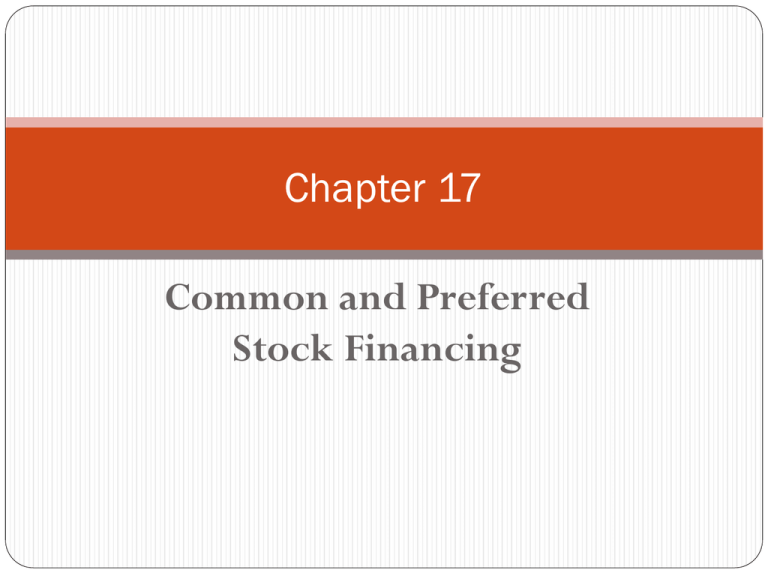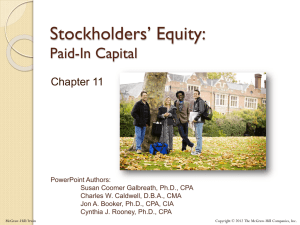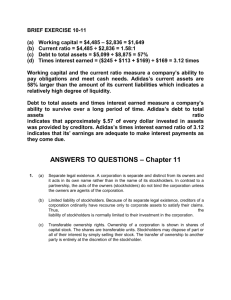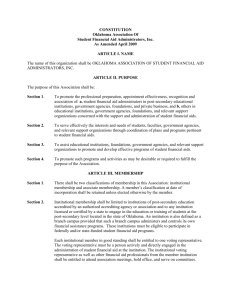Chapter 17
advertisement

Chapter 17 Common and Preferred Stock Financing Chapter 17 - Outline Common Stock The Voting Right Rights Offering “Rights-on” and “Ex-rights” Poison Pill Preferred Stock Provisions Associated with Preferred Stock Common Stock Common stockholders own the corporation and have ultimate control over it They have a residual (leftover) claim to all corporate income that is not paid out to others Common stockholders have the right to vote on all major issues, including election of the board of directors The Voting Right Proxy: –a right to vote given to someone else (an absent stockholder’s vote) Majority Voting: – all directors must be elected by at least 51% of the vote – doesn’t allow minority stockholders representation on the board of directors Cumulative Voting: – a stockholder’s votes can all be used to elect 1 person – allows minority stockholders representation on the board of directors Electing Directors Number of directors desired X Total number of shares outstanding Shares required = Total number of directors to be elected + 1 +1 (Shares owned − 1) X (Total number of directors to be elected + 1) Number of directors = (Total number of shares outstanding) that can be elected Rights Offering Rights Offering: – gives current stockholders the first option to purchase new shares (called a preemptive right provision) – allows existing stockholders the same amount of control they have initially – stockholder receives 1 right for each share of stock owned “Rights-on” and “Ex-rights” “Rights-on” – if you buy the stock, you will also acquire a right toward a future purchase of the stock – occurs when a rights offering is initially announced “Ex-rights” – when you buy the stock you no longer get a right toward future purchase of the stock – occurs after a certain period of time Value of Right (R) When stock is trading rights on: R = [M0 – S] / [N+1] Where: M0 = market value of stock (rights on – stock carries right), S = subscription price N = number of rights required to purchase a new share of stock. When stock is trading ex-rights: R = [Me – S] / N Where: Me = market value of stock (ex-rights- stock no longer carries a right). Poison Pill Poison Pill: – a rights offering made to existing shareholders of a company with the purpose of making it more difficult to be acquired by another company – used to avoid a takeover (anti-takeover weapon) – makes hostile takeovers very expensive and unattractive – used as a defensive tactic in fending off an unwanted merger – allows existing shareholders the right to buy additional shares of the stock at a very low price Preferred Stock Preferred Stock: – a hybrid security combining characteristics of both debt and common stock – has a fixed dividend that must be paid before dividends on common stock – dividends are not tax deductible to a company – provides the company with a balance in its capital structure – primary purchasers are corporate investors, insurance companies, and pension funds Provisions Associated with Preferred Stock Cumulative Dividends: – if not paid in one year, dividends accumulate and must be paid in total before common stockholders Conversion Feature: – preferred stock may be converted into common stock at the option of the holder Call Feature: – preferred stock may be “callable” before maturity (like debt) at a small premium over par Features of alternative security issues











